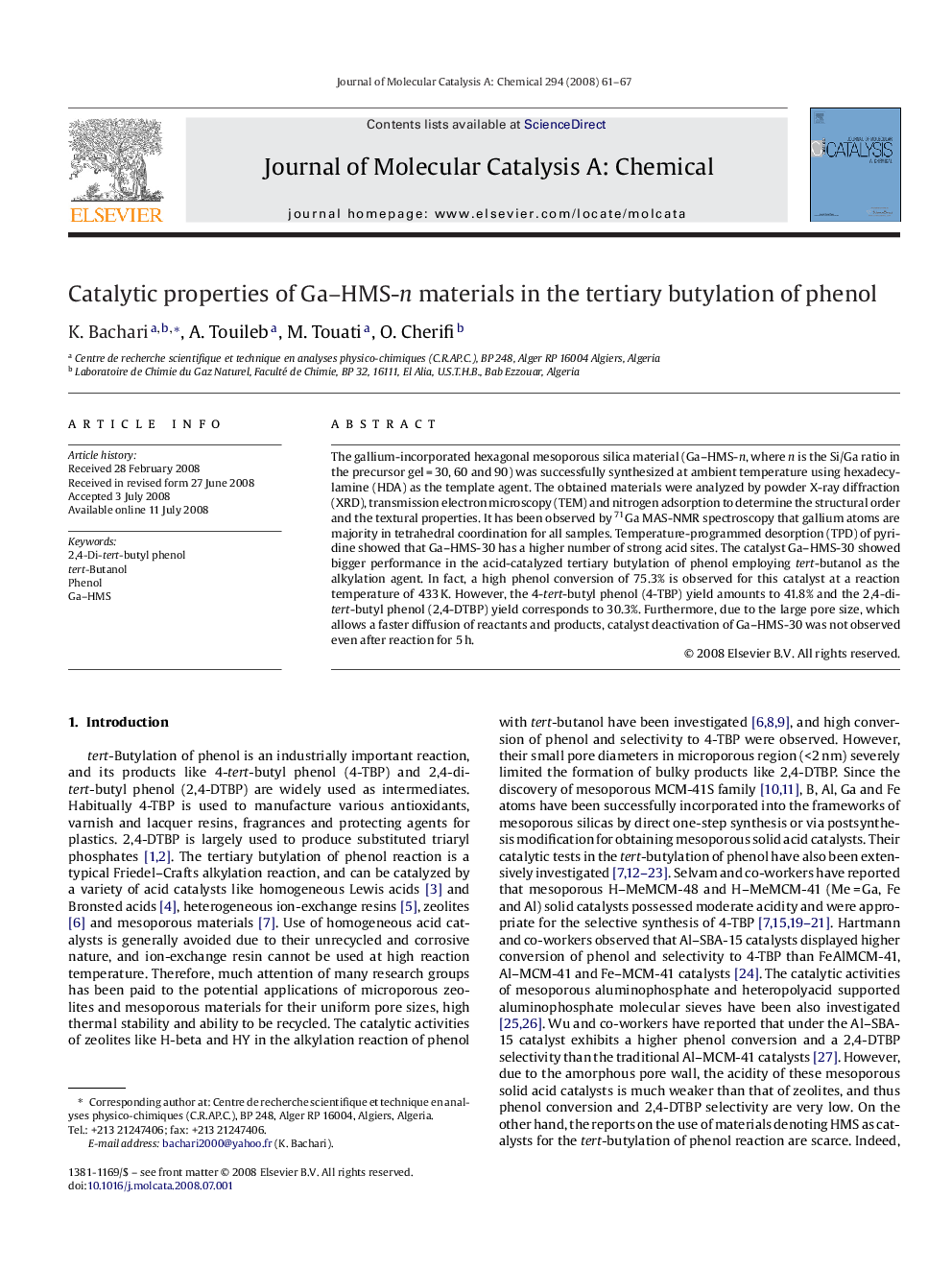| Article ID | Journal | Published Year | Pages | File Type |
|---|---|---|---|---|
| 67372 | Journal of Molecular Catalysis A: Chemical | 2008 | 7 Pages |
The gallium-incorporated hexagonal mesoporous silica material (Ga–HMS-n, where n is the Si/Ga ratio in the precursor gel = 30, 60 and 90) was successfully synthesized at ambient temperature using hexadecylamine (HDA) as the template agent. The obtained materials were analyzed by powder X-ray diffraction (XRD), transmission electron microscopy (TEM) and nitrogen adsorption to determine the structural order and the textural properties. It has been observed by 71Ga MAS-NMR spectroscopy that gallium atoms are majority in tetrahedral coordination for all samples. Temperature-programmed desorption (TPD) of pyridine showed that Ga–HMS-30 has a higher number of strong acid sites. The catalyst Ga–HMS-30 showed bigger performance in the acid-catalyzed tertiary butylation of phenol employing tert-butanol as the alkylation agent. In fact, a high phenol conversion of 75.3% is observed for this catalyst at a reaction temperature of 433 K. However, the 4-tert-butyl phenol (4-TBP) yield amounts to 41.8% and the 2,4-di-tert-butyl phenol (2,4-DTBP) yield corresponds to 30.3%. Furthermore, due to the large pore size, which allows a faster diffusion of reactants and products, catalyst deactivation of Ga–HMS-30 was not observed even after reaction for 5 h.
Graphical abstractIn this paper, we report the results of tert-butylation of phenol over the gallium-containing hexagonal mesoporous silica materials (Ga–HMS-n). These materials were synthesized with various Si/Ga ratios and characterized by powder X-ray diffraction (XRD), transmission electron microscopy (TEM), N2 adsorption, temperature-programmed desorption (TPD) of pyridine and 71Ga MAS-NMR spectroscopy and its catalytic activity was tested in the tert-butylation of phenol. Figure optionsDownload full-size imageDownload as PowerPoint slide
